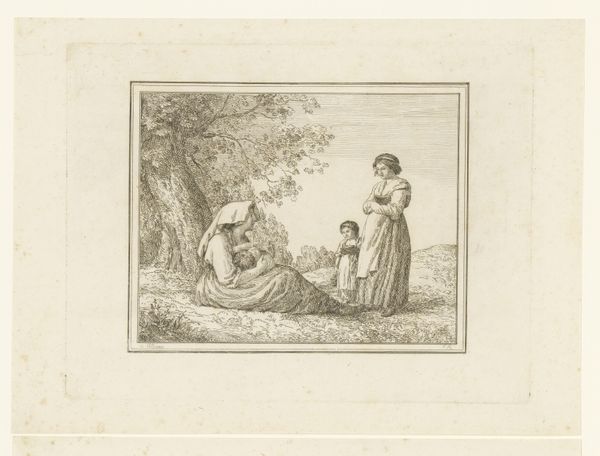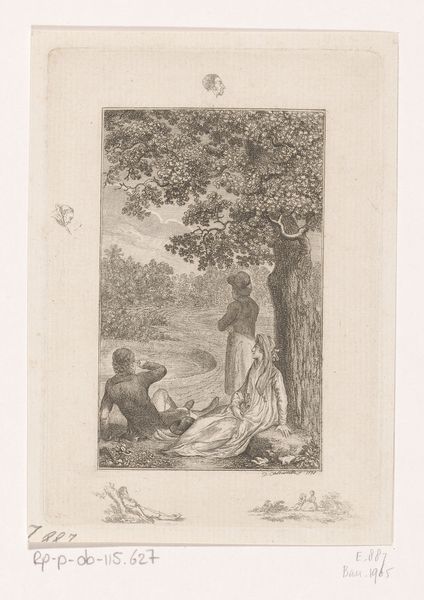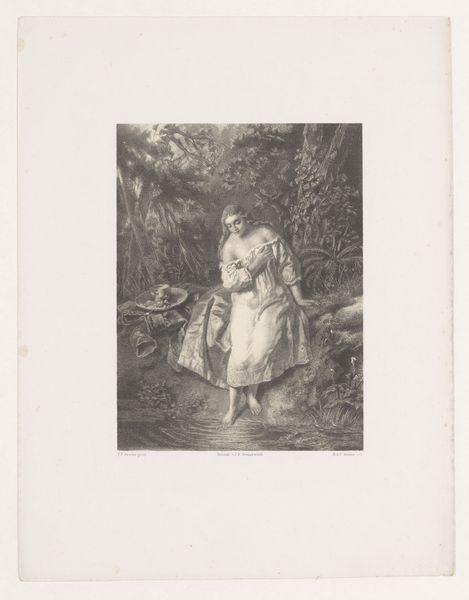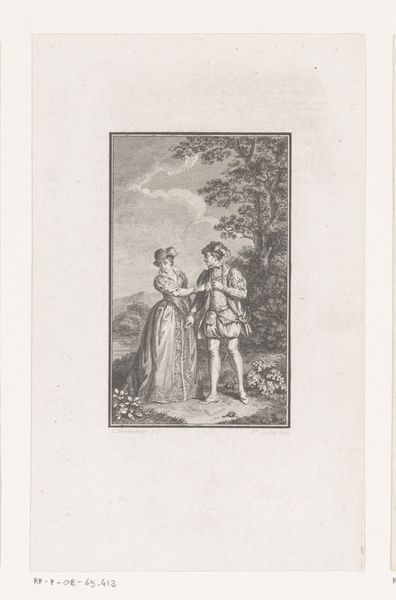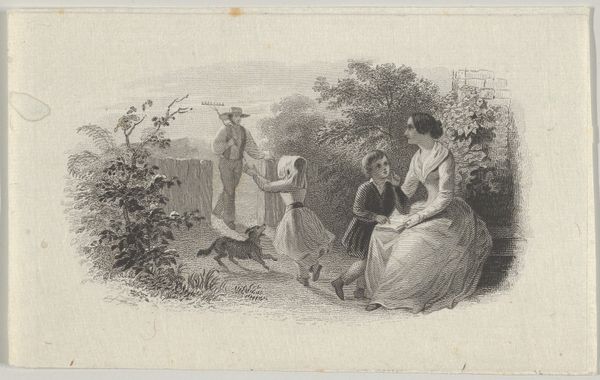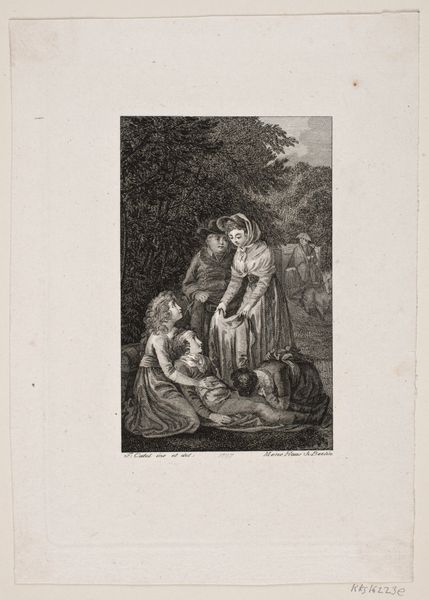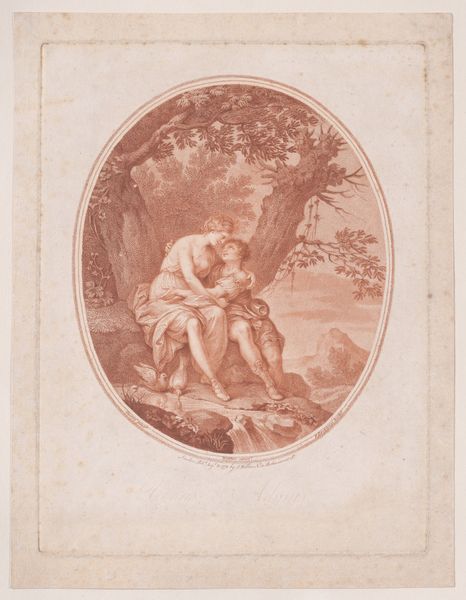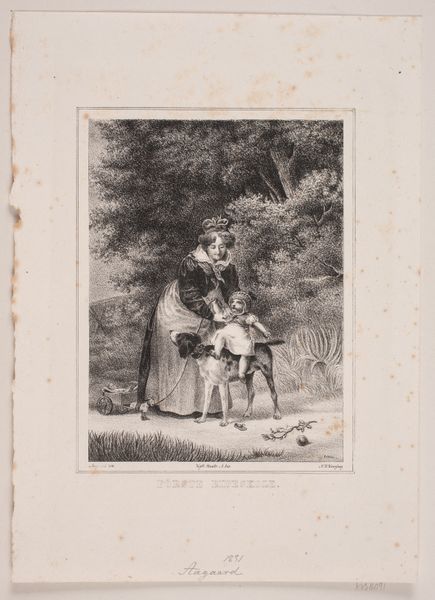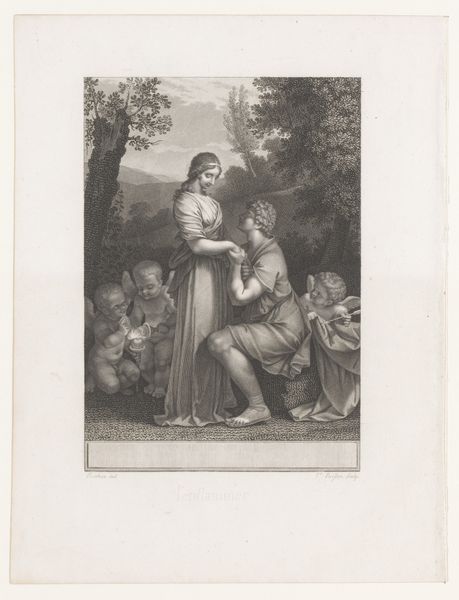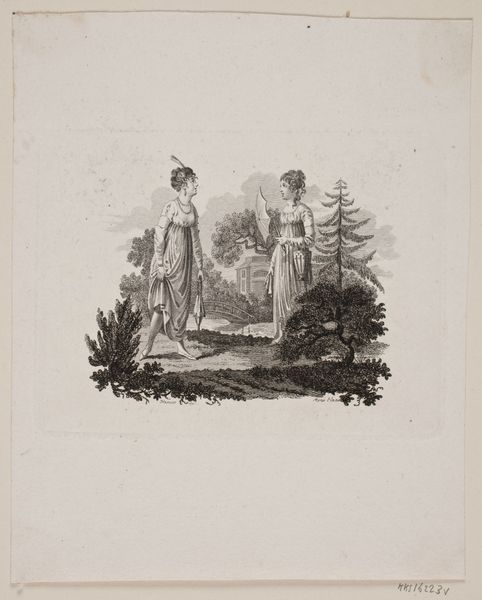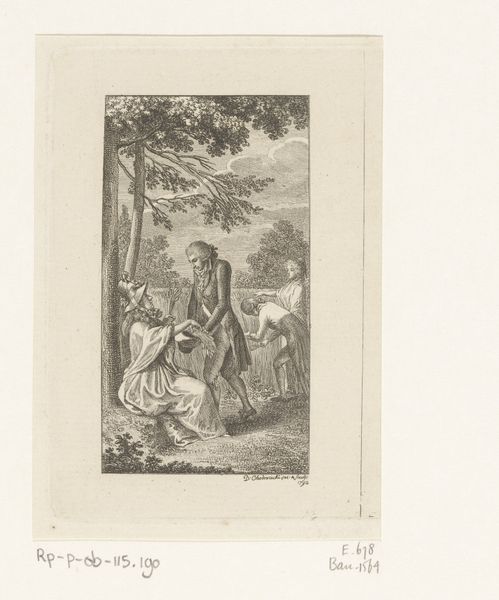
print, engraving
garden
neoclacissism
landscape
child
19th century
genre-painting
history-painting
engraving
Dimensions: height 150 mm, width 120 mm
Copyright: Rijks Museum: Open Domain
Curator: Welcome. Here we have Daniel Nikolaus Chodowiecki’s 1799 engraving, “Cléry's Children in the Garden,” housed right here at the Rijksmuseum. Editor: Well, right off the bat, the contrast is what gets me. The meticulous details rendered in simple monochrome make it so crisp, almost hyper-real. There’s something… unnerving about it, considering the domestic scene depicted. Curator: That very domesticity, and the era of Neoclassicism in which it was produced, provide an interesting tension. These are the children of Jean-Baptiste Cléry, valet to Louis XVI. Think of it within the framework of the French Revolution, and suddenly this innocent garden scene reads rather differently. Editor: Exactly! It feels deliberately constructed. The figures are positioned just so, echoing a classical composition. Look at how the lines converge and create balance—the tree mirroring the seated figure, the careful framing. It almost feels staged, like propaganda. Curator: Indeed. It invites us to consider the social context of art production. Chodowiecki created this work a few years after the execution of Louis XVI. These are orphaned royal children and this engraving humanizes them, attempting to garner public sympathy. The delicate lines and soft shading create an aura of vulnerability around the figures. Editor: I'm intrigued by the seemingly informal setting – a woman and children in the garden—but the formality of their dress suggests an elevated social position. Are they simply engaged in some childhood amusement? Or is it a visual statement about innocence and fragility in the face of revolutionary turmoil? Curator: Absolutely. By representing the children in such a tranquil scene, Chodowiecki emphasizes their humanity. However, as a piece of print, it was aimed toward mass production and broad viewership, underscoring the potency of imagery as political communication. Editor: So, we see, it is both technically and historically charged. Chodowiecki’s expertise with line and tone certainly delivers a powerful message and invites deeper investigation of sociopolitical narratives of its time. Curator: Precisely. Its historical implications offer an interesting reflection upon not only Chodowiecki’s work, but of the social and political powers at play when considering a seemingly innocent piece such as "Cléry’s Children in the Garden."
Comments
No comments
Be the first to comment and join the conversation on the ultimate creative platform.
